https://www.youtube.com/watch?v=ZHUY6SD6SsM
How to Run Underground Power to a Shed _ Ask This Old House
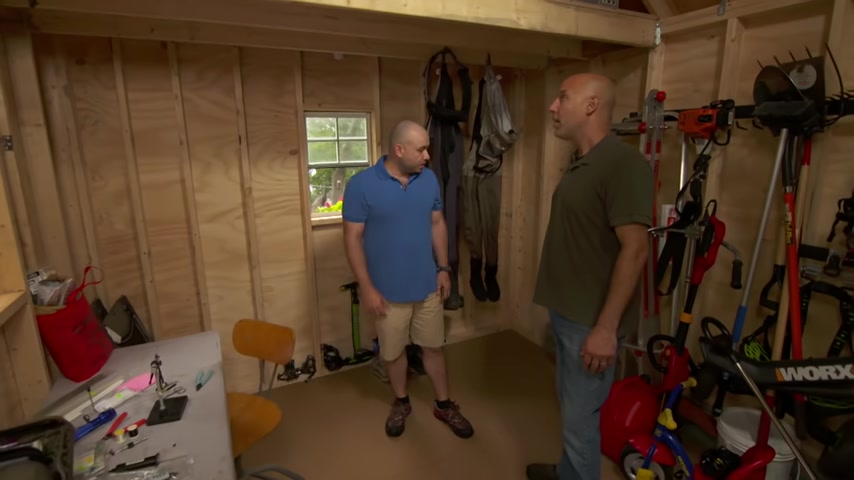
Wow , this is big .
Huh ?
Look at how roomy it is in here .
Oh , double doors .
I like it .
Yeah , we've got plenty , plenty of room for our stuff here .
I've got some electric tools here .
No place to charge them though .
Uh No lights either .
So I've got my uh fly ti station here as well .
I tie some for fly fishing .
I am , but it's hard to do in the dark .
Yeah , we need some light .
What else do you have going on ?
I check it out out here .
This is , this is where we park our cars out here .
Ok .
Very nice .
Yeah , so it gets pretty dark out here with , with all this tree cover .
Uh So lights out here would be pretty nice .
We're also thinking about uh electric vehicle at some point too .
Uh So maybe a charging station off of the shed big .
I like that .
It's like a mini house .
Exactly .
Yeah .
So speaking of house , we gotta get electricity from the house to the shed .
So why don't you show me where the main panel is and we'll evaluate it .
All right , cool .
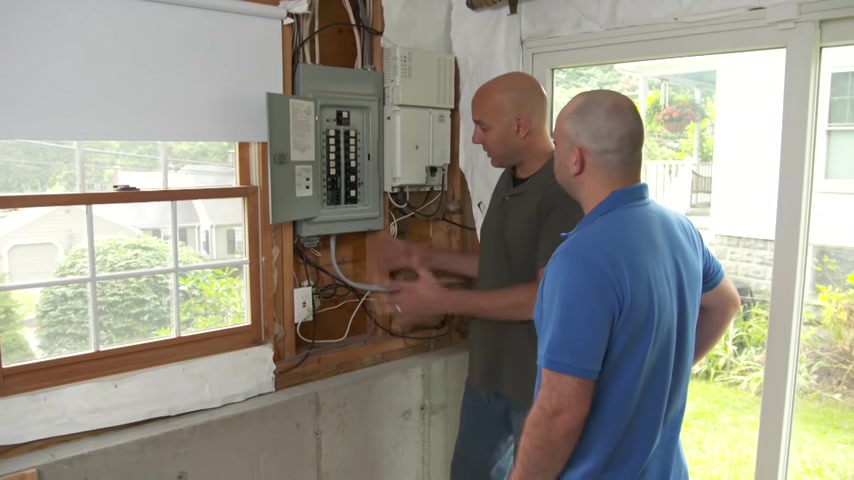
So how are we looking good ?
So it's um 100 AMP main service coming in , supplying the whole house .
It's enough electricity , the panels a little full right now .
But I think we can uh adjust it .
We can put some of the mini breakers in , it splits things up a little bit , helps things out .
Now , if we were just running lights and outlets to the shed , probably run a couple of circuits underground and call it a day .
That would be good .
But with the E V charger and the flexibility that I like to have out there , we're gonna put a sub panel in .
So a sub panel is basically this , it's a smaller version of this usually and sometimes we mount them next to the main panel allows us more circuits when these fill up .
But with this here , we have some tricky situations that we got to deal with .
We gotta run the wire from here over to the corner of the house , go on the ground .
Once we do that , this goes to the corner and this goes underground , same wire , six gauge .
It's rated for about 60 amps of electricity , but we can't run this in the conduit underground .
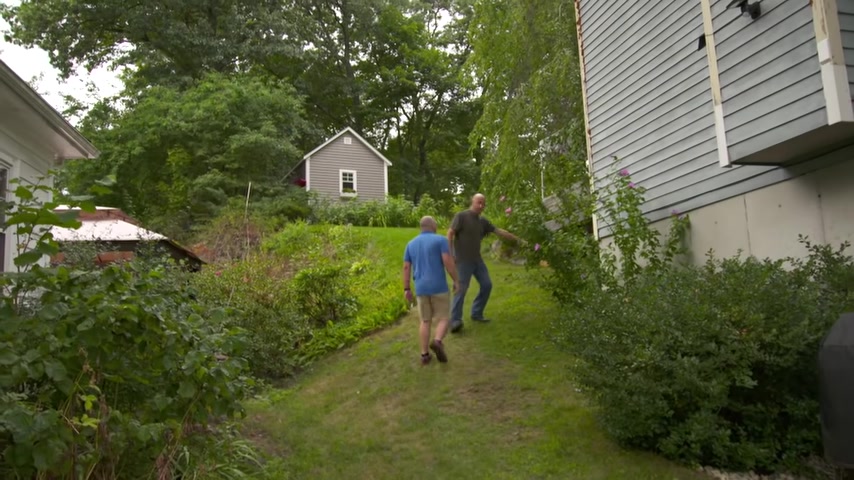
So that's what I wanna do for you , but that's not the problem .
The real problem is outside .
Let me show you what I mean out here is a little bit of an issue getting the electricity from the panel to the corner .
No big deal come across the basement once we get to the corner , we got to come outside and go underground 18 inches below the surface up to the shed .
Now , it's quite a distance up that hill and it's a lot of , it's really steep incline .
I also see some exposed ledge over here , which I don't love .
So how do we deal with the ledge ?
Well , if we hit the ledge , we'll deal with that when we get to it .
And I have a pretty good sized trenching machine that'll help us dig this before we do any digging .
We call the utility locating service .
They came out and mocked for any underground pipes or wires .
They gave us the ok to dig .
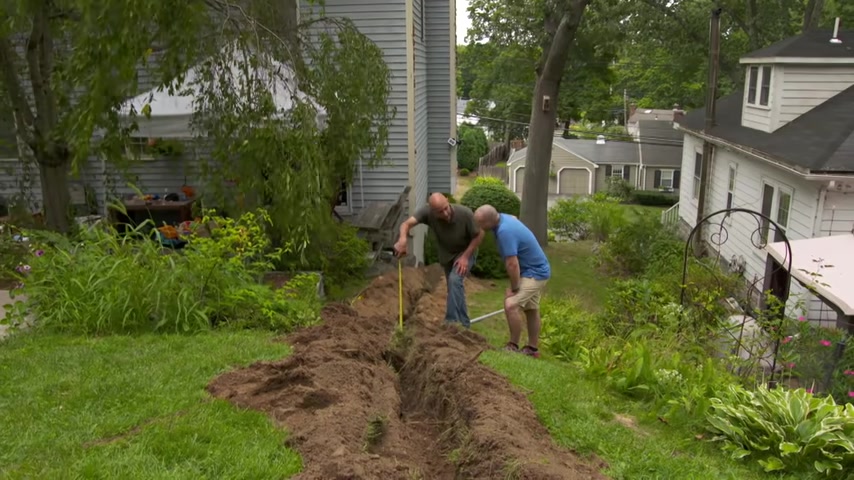
Ok .
The trench is doug and I would say we got half lucky .
So right around here , halfway up the hill , you can see 18 inches .
That's great .
That's what we want .
Conduit is gonna go in the trench , set some sand around it , come up , put some tape .
We're good , but up the hill here .
Not so great .
Look , remember that ledge .
I showed you eight inches right here .
So this whole area right here , we have to treat it a lot differently than down there .
What we'll do is we'll lay the pipe inside the trench on top of the ledge and then we'll cover it , we'll mix up some concrete , we'll cover it with two inches of concrete that way there .
If you're ever in this yard digging , you're going to hit that concrete and you're going to know exactly where the conduit is .
So you'll stop .
Let's start down at this end with the pipe .
Ok .
Let's get some sand in there .
We put the sand in the trench first to protect the conduit from sharp rocks .
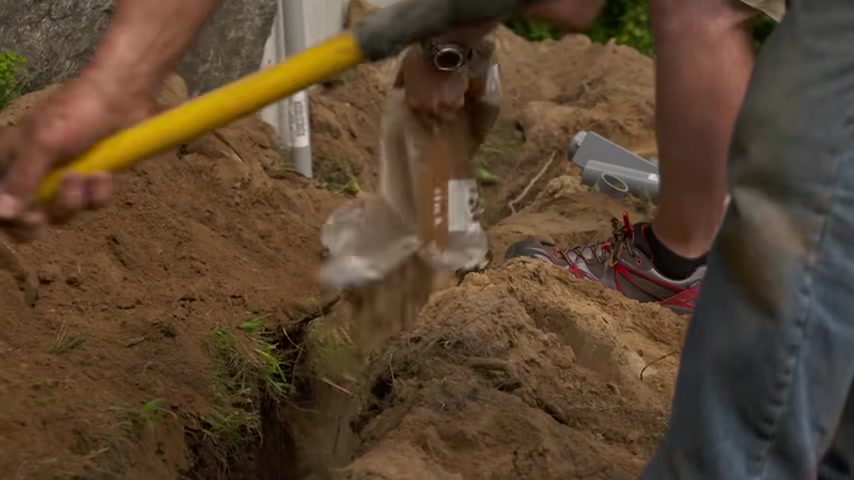
I use this propane torch to heat the PV C until it's pliable .
Once it cools , it holds whatever shape I leave it at , we back , fill the trench with a few inches of sand to act as a warning .
And then the caution tape goes on top of that .
All right , Paul , the pipes in the trench , everything's back filled and it looks real good .
The next step is to get the wires from the shed to the house for that .
We're gonna start with this right here .
This fish tape , we'll pull the wires up , go on that and I'll go up here .
All right .
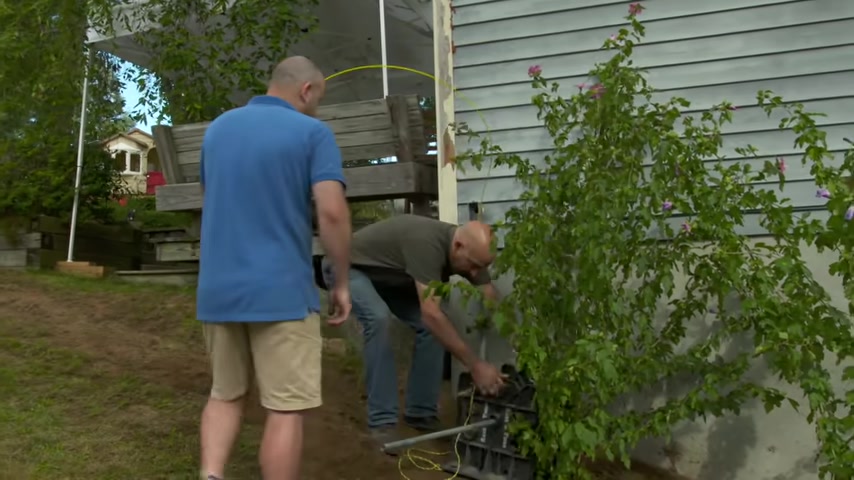
All right .
Let me know when you see it , Paul .
Ok .
When you get it , just pull it all the way through .
Got it .
I got it .
All right .
Pull about five or six ft .
All right , we're good .
Ok .
Now we'll get this rope tied on to that fish tape .
And ultimately , this is what pulls the wire and is the rope ?
All right .
So I'm gonna head up the hill and pull this rope in .
You just make sure it comes off the real good .
All right .
All right .
How's that ?
Keep coming .
A little bit more .
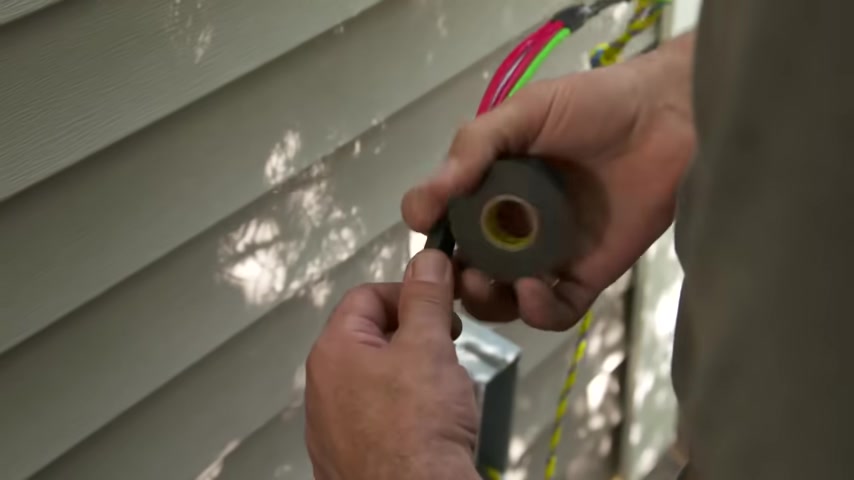
When we're running wires underground in a pipe , we need to run individual conductors with a special insulation on it .
And because it's 2 40 up here at the shed , we have two hot wires , a neutral in a ground .
All right .
So , coming in from the outside pipe , we have these wires right here .
Individual conductors .
They're gonna spice together with these wires right here .
They're the same size and conductor and it's just in a cable that goes up to the sub panel right there .
Now , it could have just came from the top of this junction box right up into here with pipe , but it's a little tricky .
So I like to use this .
Now they get spliced together just like this with this special insulated connector here .
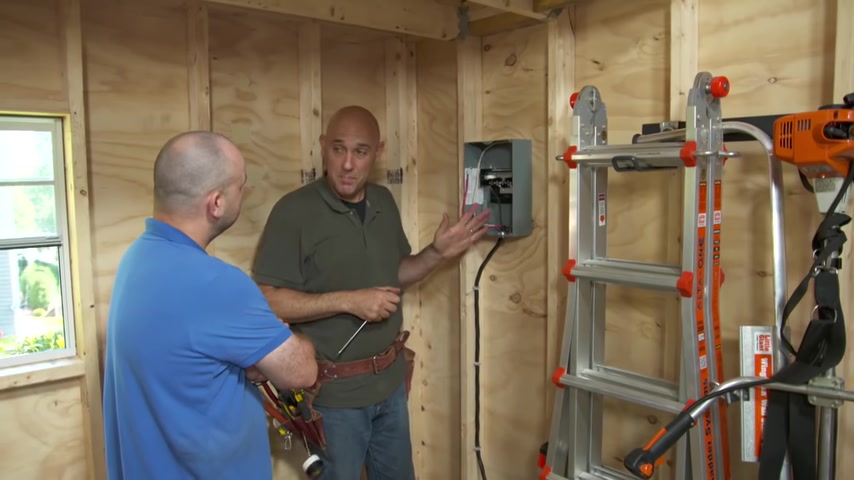
Ok .
So the difference between a main panel and a sub panel is that the grounds and the neutrals are separated , that's really important .
Now , this hot wire goes on this side of the bus bar and that supplies power 120 bolts to these three brake .
This hot wire over here , this supplies power 120 volts to the other three breakers .
And if you need 240 volts , you tap it off of both sides with a two pole breaker .
Ok .
So that's how that works .
Yeah , it's that simple .
All right , let's get one , some wires .
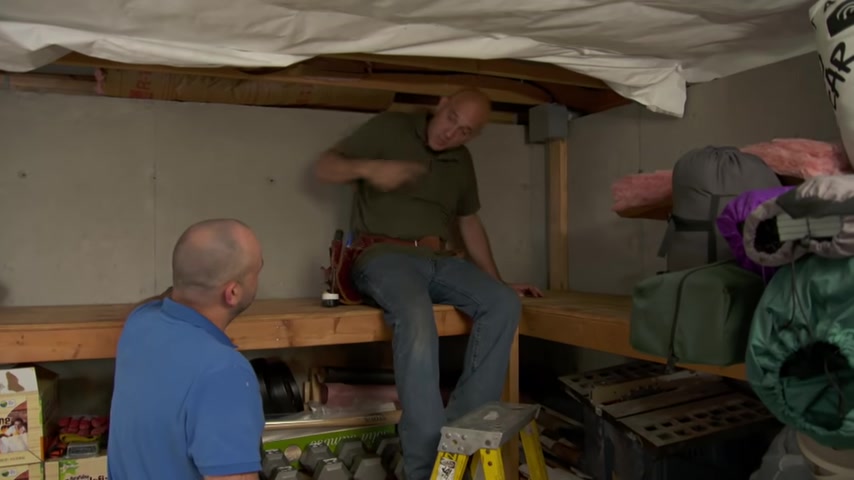
Now with the wiring finished in the shed , it's time to head to the basement .
Ok .
So that's the same connections we did out in the shed , the underground wire is tied into this cable right here .
We ran them right back to the electrical panel .
Now we're gonna tie those into the main breaker .
So I've gone ahead and made some room here .
We were able to take four breakers and condense them down to just two breakers using these mini breakers .
Now we'll tie the feet of wires that go up to the shed into this 240 volt 60 amp breaker is now going to feed power to a shed .
Yeah , with the power shut off to the electrical panel , I can tie these into the main brake now .
Ok .
The power is back on everything's tested .
Let me give you the tour as you drive up your driveway here , this whole area is going to be well lit from that light right there .
It's on a time clock .
So when it gets dusk comes on , when it goes to dawn , it shuts off through these really neat doors here .
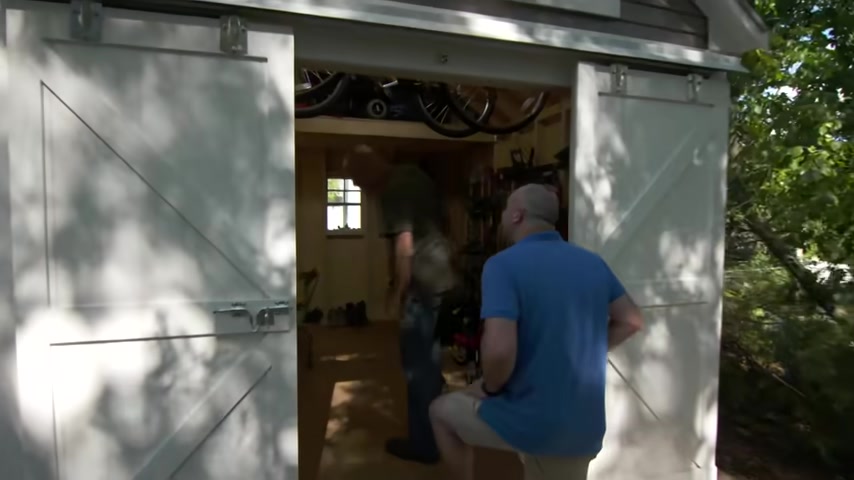
You can see the amount of light in here .
I had this led light strip .
It's got plenty of light right here where you're working and there's another one up top to light up the rest of the shit that's perfect over here at the sub panel , I've added this surge protector .
Whenever you go underground with wiring , you're introducing the possibility of surges and spikes from transient voltage .
So that's a great idea .
Now , there's plenty of room also for your electric vehicle charger .
And speaking of charger , now you want more has a place to live .
Isn't that great ?
Now , there's plenty of outlets everywhere else .
You can plug anything you want in outside .
Let me show you here .
So there's an outlet up here .
You can vacuum your car , anything like that and there's a security light here .
Motion activated .
So as you walk up the stairs , the light's gonna come on or if you're anywhere in this driveway area , light comes on too .
Perfect , Scott can't .
Thank you enough .
You got it .
This has been great .
It was a lot of fun when you get that electric car .
Give me a call .
Thank you .
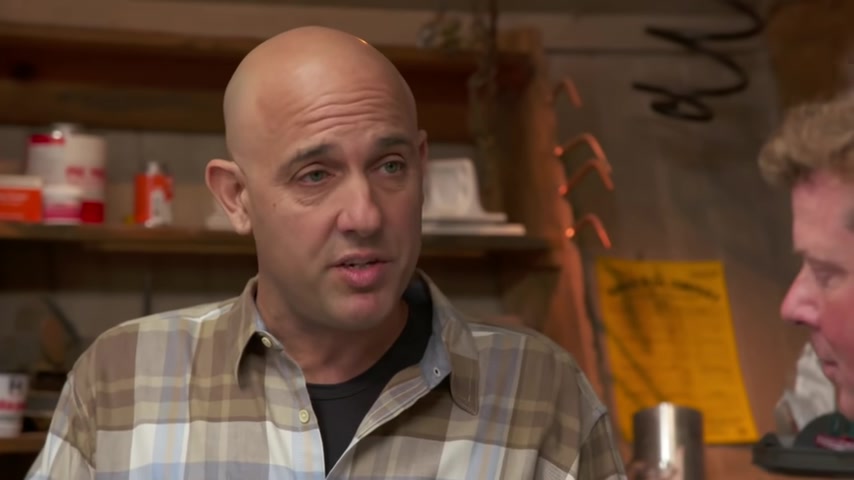
What's the matter little ledge stop you from digging down deep enough and I'm still rattling from that whole day .
It was crazy .
You know , that's the first time that I've seen concrete used as a solution to a trench that you can't get deep enough .
Yeah , it was good .
You know , you got basically three depths that you have to comply with .
You have your 18 inches , your 12 inches and your six inches , different voltages need to different depths .
If you can't hit them , you cover them .
Ideally , I'd love to dig it all deep enough , but sometimes you just can't with Legend Wall .
So you just cover it with concrete .
Yeah , it's a good solution .
So you ran enough power out there .
Uh , which is why we had to go down so deep .
We ran 2 40 volts for his electric car if he needed it , whatever it was .
But , you know , because it's detached because it's high voltage .
We have to treat it .
Very special .
Part of that specialness is right here .
This eight ft ground on , we gotta drive that into the earth and we gotta bond it to the electrical panel and that's just , that's a code .
You have to do it .
So , and it's safe .
It's real safe .
Yeah .
Well , he's gonna be time flies all night long .
Nice chap .
Yeah .
Are you looking for a way to reach a wider audience and get more views on your videos?
Our innovative video to text transcribing service can help you do just that.
We provide accurate transcriptions of your videos along with visual content that will help you attract new viewers and keep them engaged. Plus, our data analytics and ad campaign tools can help you monetize your content and maximize your revenue.
Let's partner up and take your video content to the next level!
Contact us today to learn more.